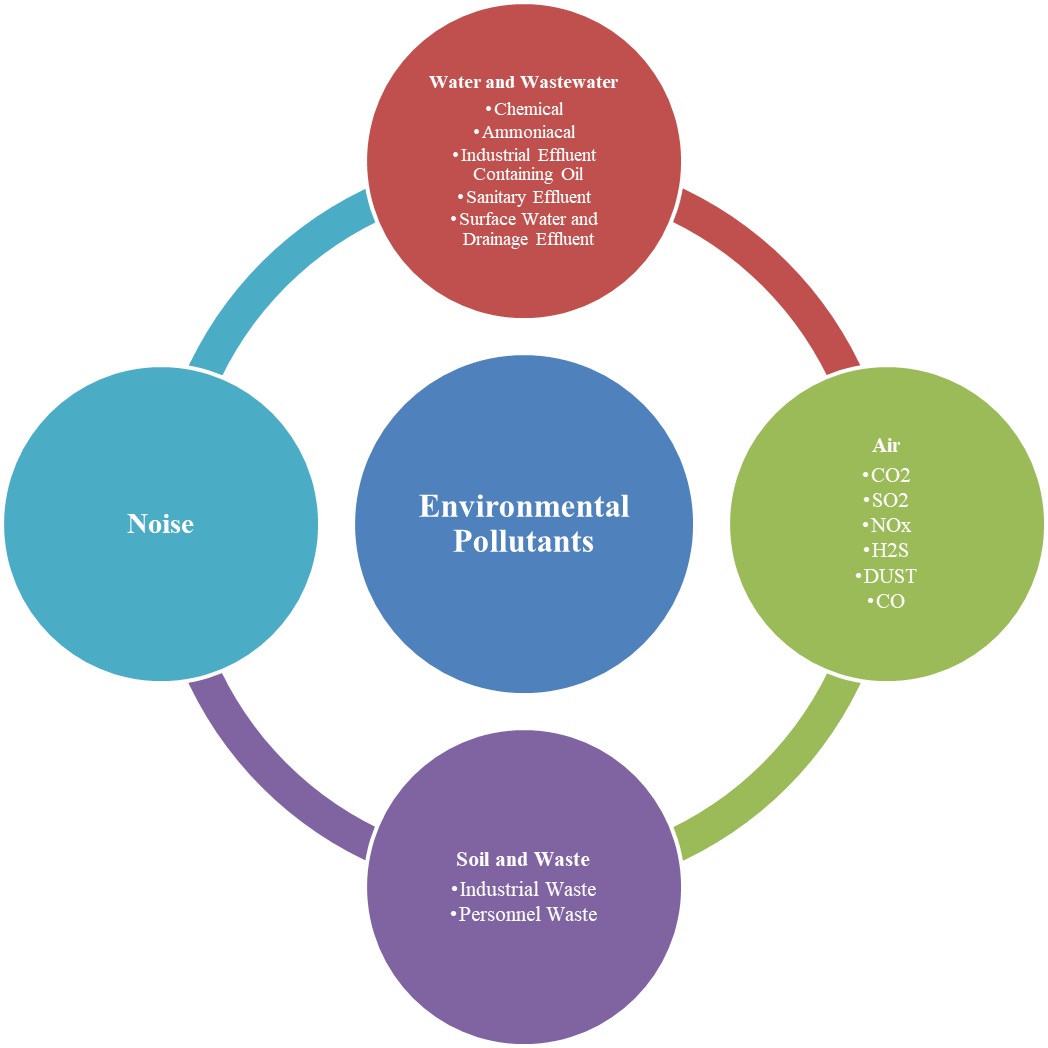Identification and Prioritization of Environmental Pollutants in the Bistoon Petrochemical Industry, Kermanshah
Keywords:
Water, Environmental Strategies, Bistoon Petrochemical Industry, System Dynamics Model, AirAbstract
The global environmental pollution crisis has led scientists to believe that if development and environmental protection are not aligned and integrated, sustaining life on Earth for future generations will not be feasible. In Iran, due to the expansion of oil and gas industries and their close connection with the social and environmental lives of surrounding residents, increased attention to the environmental and health impacts of the oil, gas, and petrochemical industries is justified. Thus, eliminating or reducing these risks to an acceptable level is of great importance. Petrochemical industries are known to generate environmental pollutants throughout various stages, including the collection of raw materials, production and transformation of intermediates, and the collection and storage of final products. The primary environmental impacts of petrochemical projects involve water, soil, air, and noise pollution, as well as socio-economic consequences. Therefore, the aim of this research is to identify and prioritize environmental pollutants in the Bistoon Petrochemical Industry, Kermanshah. The research is applied in terms of purpose and exploratory-descriptive in terms of method. The research instrument is a pairwise comparison questionnaire. The statistical population consists of the managers of the Bistoon Petrochemical Company, Kermanshah, with 10 experts selected randomly using the snowball sampling method. Data analysis was conducted using the SWARA software. The results indicate that water and wastewater-related pollutants, with a weight of 0.445, rank first. Air-related pollutants, with a weight of 0.271, rank second. Soil and waste-related pollutants, with a weight of 0.164, rank third. Noise-related pollutants, with a weight of 0.120, rank fourth. Based on these findings, the implementation of advanced technologies to improve the wastewater purification processes to reduce environmental pollution is recommended.
References
Y. Wang, M. Tian, D. Wang, Q. Zhao, S. Shan, and S. Lin, "Study on the HSE management at construction site of oil and gas processing area," in Procedia Engineering, 2012, vol. 45, pp. 231-234, doi: 10.1016/j.proeng.2012.08.149.
J. K. Panigrahi and S. Amirapu, "An assessment of EIA system in India," Environmental Impact Assessment Review, vol. 35, pp. 23-36, 2012, doi: 10.1016/j.eiar.2012.01.005.
A. Ponikarova, "Environmental Constituent of the Petrochemical Complex Sustainable Development," E3s Web of Conferences, vol. 486, p. 04021, 2024, doi: 10.1051/e3sconf/202448604021.
A. D. A. Yaha, M. A. M. Said, G. S. L. Devi, and H. M. Azamathulla, "Assessing the impacts of petrochemical industrial facilities on groundwater in Zubair district," Water Supply, vol. 22, no. 10, pp. 7713-7731, 2022, doi: 10.2166/ws.2022.328.
M. Altafi and K. Mosleh-Nejad, "Technology in Wastewater Treatment of Petrochemical Industries," in Fourth Conference on Water, Wastewater, and Waste Management, Tehran, 2013. [Online]. Available: https://civilica.com/doc/230644/.
M. Ghorbani, "Investigation and Identification of Environmental Pollutants in Petrochemical Industries and Providing Suitable Solutions," in First International Conference on Natural Hazards and Environmental Crises in Iran: Solutions and Challenges, Ardabil, 2016. [Online]. Available: https://civilica.com/doc/548839.
J. D. Prochaska et al., "The utility of a system dynamics approach for understanding cumulative health risk from exposure to environmental hazards," Environmental Research, vol. 172, pp. 462-469, 2019, doi: 10.1016/j.envres.2019.02.039.
S. Sepehrnia, "Air Pollution: A Controllable Issue," Journal of New Technologies, vol. 3, no. 4, 2019. [Online]. Available: https://khu.ac.ir/files/site50/files/%D9%86%D8%B4%D8%B1%DB%8C%D8%A7%D8%AA/Fanaavard_Issue%234.pdf.
"Exclusive Interview by Petrochemical News Analysis (PetroTahlil) with Amir Alam," ed.
P. Ding, L. Chu, and J. Wang, "Biological treatment of actual petrochemical wastewater using anaerobic/anoxic/oxic process and the microbial diversity analysis," Applied Microbiology and Biotechnology, vol. 100, no. 23, pp. 10193-202, 2016, doi: 10.1007/s00253-016-7869-x.
S. A. A. Zakaria, S. H. Ahmadi, and M. H. Amini, "Investigation of Environmental Challenges of Petrochemical Industries in Iran," Journal of Green Chemistry and Sustainable Technologies, no. 4, pp. 1-19, 2020. [Online]. Available: https://gcst.ccerci.ac.ir/article_127150.html.
E. Hansen, M. A. S. Rodrigues, and P. M. de Aquim, "Wastewater reuse in a cascade-based system of a petrochemical industry for the replacement of losses in cooling towers," Journal of Environmental Management, vol. 181, no. 2, pp. 157-62, 2016, doi: 10.1016/j.jenvman.2016.06.014.
A. Ashgari, M. R. Alizadeh, A. H. Mohavi, E. Soleimani, and H. Golestani-Far, Comprehensive Management of Industrial and Hazardous Wastes. Tehran: Khaniran Publishing, 2018.
J. G. Speight, The Chemistry and Technology of Petroleum. CRC Press, 2007, p. 843.













